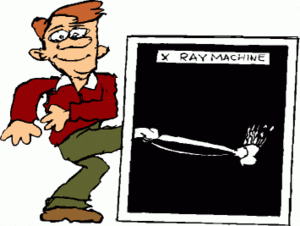Osteoarthritis of the knee has a tremendous impact on a patient’s ability to function in routine daily activities. According to the American Academy of Orthopedic Surgeons, over 13 million adults in the U.S. presented with OA symptoms in 2001. The majority of these patients were senior adults.
Pain, swelling and stiffness are the most common symptoms associated with OA of the knee. These symptoms limit the patient’s ability to bend or straighten the knee, and they may also feel grinding, popping, locking, or giving way.
Dr. Harry Derderian, an orthopedic surgeon at Lexington Clinic East in Lexington, Kentucky, specializes in both hip and knee replacement surgeries. As one of Dr. Derderian’s clinical assistants, I have seen many patients suffering from the effects of OA.
When patients are initially seen in consultation for knee pain, Dr. Derderian uses the following protocol for diagnosing and treating OA of the knee:
1. X-rays of the knees are taken to look for characteristics of OA, such as bone spurs or joint space narrowing. Normal cartilage appears as a “gap” between the thigh (femur) and lower leg (tibia) bone. Advanced OA of the knee shows a “bone on bone” appearance on x-ray.
2. Physical examination of both knees includes evaluating and comparing the patient’s range of motion in each knee. Dr. Derderian also determines if a patient is experiencing swelling (effusion) of the knee joints. He then checks for points of maximum tenderness along the medial (inside of the knee) joint lines and lateral (outside of the knee) joint lines.
Grinding (crepetation) occurs when the patient’s knee is flexed or extended. This is most commonly due to chondromalacia patella (wear and tear underneath the kneecap).
3. In addition to conventional x-rays and physical examination, an MRI of the knee may be ordered to look for tears of the meniscus, the C-shaped, shock-absorbing cushion.
After a diagnosis of OA of the knee is made, an appropriate treatment plan is determined. A general protocol is followed which varies according to the health and needs of the patient.
4. Physical therapy may be instituted for a period of one month in hopes of alleviating symptoms by strengthening the quadriceps muscles of the thighs which would help take pressure off the knees. The therapist may also use other modalities at their discretion, such as heat or ultrasound.
5. If physical therapy does not improve the patient’s symptoms, the physician may opt to drain any excess fluid from the knee joint and begin cortisone injections if the patient meets appropriate criteria.
6. The patient may need to modify activity levels or work with restrictions until symptoms improve. Losing weight is also a recommendation if the patient is overweight. For every pound of body fat lost, four pounds of pressure is taken off the knees!
In certain cases, a supplemental lubricant called Synvisc may be injected in place of the cortisone therapy. This lubricant is injected on a weekly basis for three consecutive weeks.
A total knee replacement may be warranted if the patient has advanced OA of the knee.
Many considerations are taken prior to scheduling a patient for this surgery, such as the patient’s general health, if they will have assistance following surgery, and other individual factors.
If the physician and patient both agree to pursue a total knee replacement, the patient will be scheduled for the following:
*Joint replacement class at the hospital to inform the patient about the procedure and what to expect following surgery.
*Pre-op physical with the primary care physician.
*A pre-op appointment with Orthopedics the week prior to surgery.
Currently, Dr. Derderian uses hardware which includes a:
*Femoral component, made of cobalt chrome metal,
*Tibial component, made of a durable plastic positioned in a metal tray, and a
*Patellar component, also plastic.
An average hospital stay is three days, but may vary depending on the patient. A “cell saver” unit is used to reduce the need for blood transfusions. If a patient has help, they may be discharged home. Otherwise, the patient may be admitted to a rehabilitation facility for several days following discharge from the hospital.
A patient is generally placed on anti-coagulant therapy to help prevent the formation of blood clots in the leg, which is a risk following surgery. Lovenox injections may be prescribed post-operatively for 7-10 days to prevent clotting.
Staples at the incision site are generally removed after a period of 10-14 days.
Physical therapy will be instituted soon after discharge, initially done at home by a visiting therapist, then progressing to outpatient treatment at a physical therapy facility of choice. The main goal is to achieve optimal flexion and extension following a knee replacement.
A “new knee” will not be a “normal knee”. Hopefully, the knee replacement will resolve a majority of the pain and disability felt prior to surgery; however, there is no guarantee.
In conclusion, OA of the knee is a potentially disabling diagnosis but treatment is available to help many patients.
Lucy A. Cain
Orthopedic Assistant
Harry Derderian, MD
Director of Orthopedics
Saint Joseph Hospital East
Lexington, Kentucky
Reference:
- www.allaboutarthritis.com www.jointreplacement.com www.depuyorthopaedics.com www.aaos.org (patient information)




